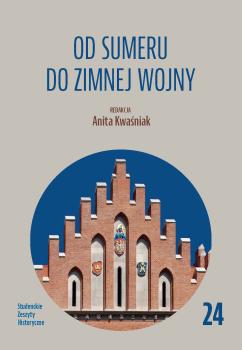Frankensteina nie stworzył człowiek. Kulturowy wydźwięk roku bez lata .......... 127
Synopsis
FRANKENSTEIN WASN’T CREATED BY A MAN: CULTURAL IMPACT OF THE YEAR WITHOUT SUMMER
In the spring of 1815, the eyes of all Europeans were focused on Napoleon’s escape from Elba. Meanwhile, on the other side of the world, on the small island Sumbawa, the Tambora volcano exploded on April 5. The eruption, which lasted several months, was heard within a radius of 2.5 thousand kilometers. 100 cubic kilometers of pyroclastic material escaped from the earth’s interior, a significant part of which entered the upper layers of the atmosphere. The volcanic ash, spreading throughout the Northern Hemisphere, obscured the Sun, lowering the average temperature by 0.3-0.4°C. According to various estimates, as a direct result of the eruption, and above all as a result of the collapse of the climate and the accompanying crop failures, between seventy thousand and over two hundred thousand people died in the following years. In 1816, which was called “The Year Without a Summer” due to the effects of the Tambora eruption, a group of friends led by George Byron spent their holidays on Lake Geneva. Due to rain and total cloud cover, the friends did not leave their villa. Trying to kill time, they organized a literary competition for the most terrifying story. In this way, John Polidori introduced the vampire character into literature for the first time, Mary Shelley created the outline of her Frankenstein, and Byron wrote the poem Darkness, later translated by Mickiewicz as Ciemność. The events on Lake Geneva are one of many similar ones that occurred at that time throughout Europe. Prose, poetry and paintings of that time are evidence of a global catastrophe that marked not only politics and the economy, but – equally importantly – culture. Cloudy landscapes by Friedrich or blood-red sunsets by Turner testify to the presence of volcanic ash and sulfur in the atmosphere, while work on the velocipede (the ancestor of the bicycle) was accelerated by Karl Drais due to the lack of horse feed at the time. In my article, I deal with the social reaction to the Tambora eruption and describe the cultural resonance of “The Year Without a Summer”. I focus on Western Europe, while also attempting to answer the question of whether the most powerful volcanic eruption in human history had any effect on the culture of Polish lands.





